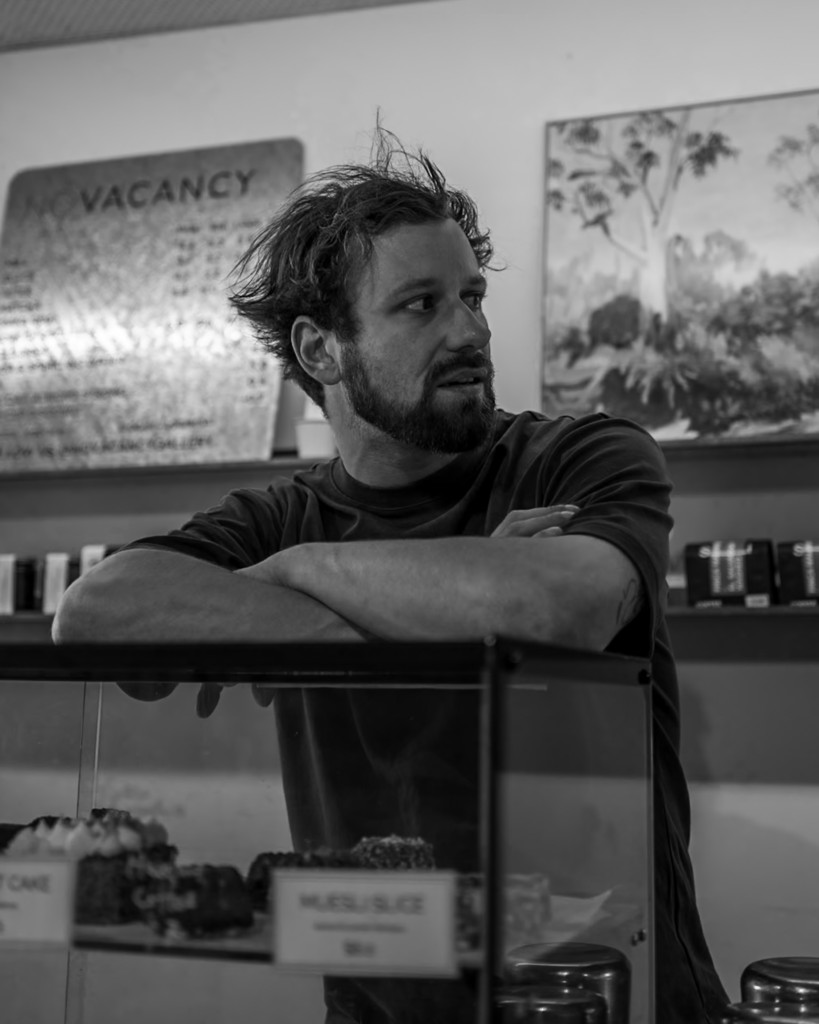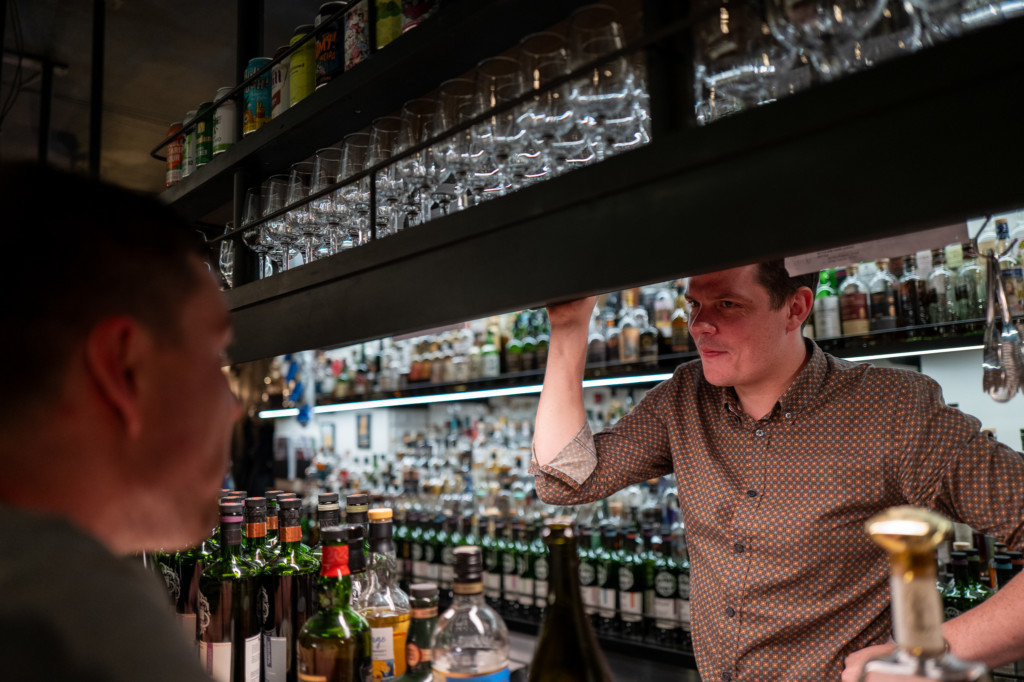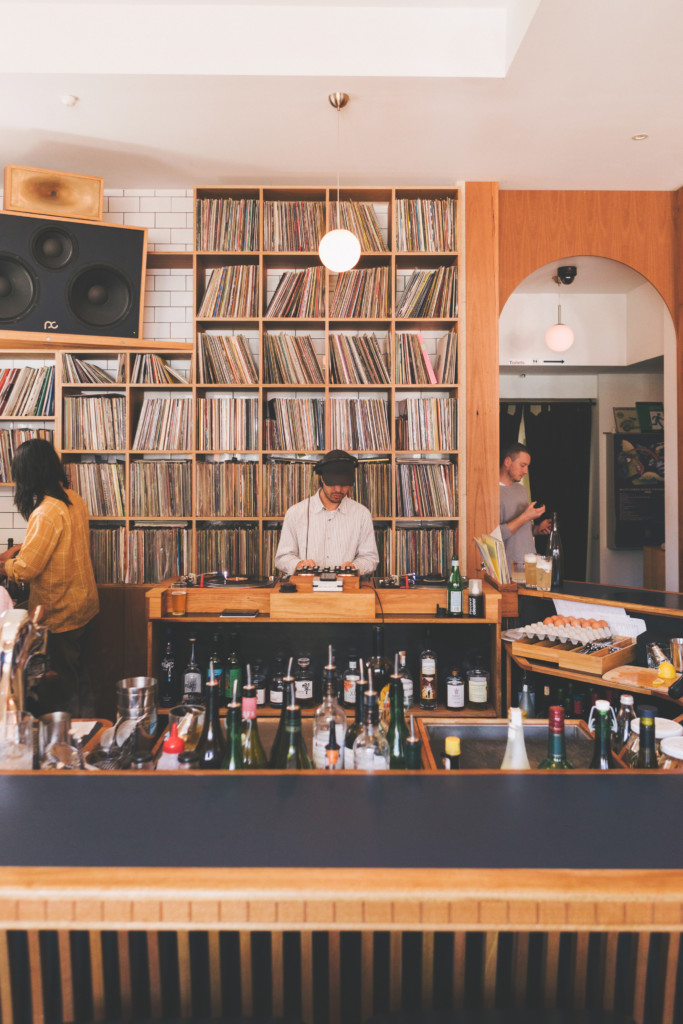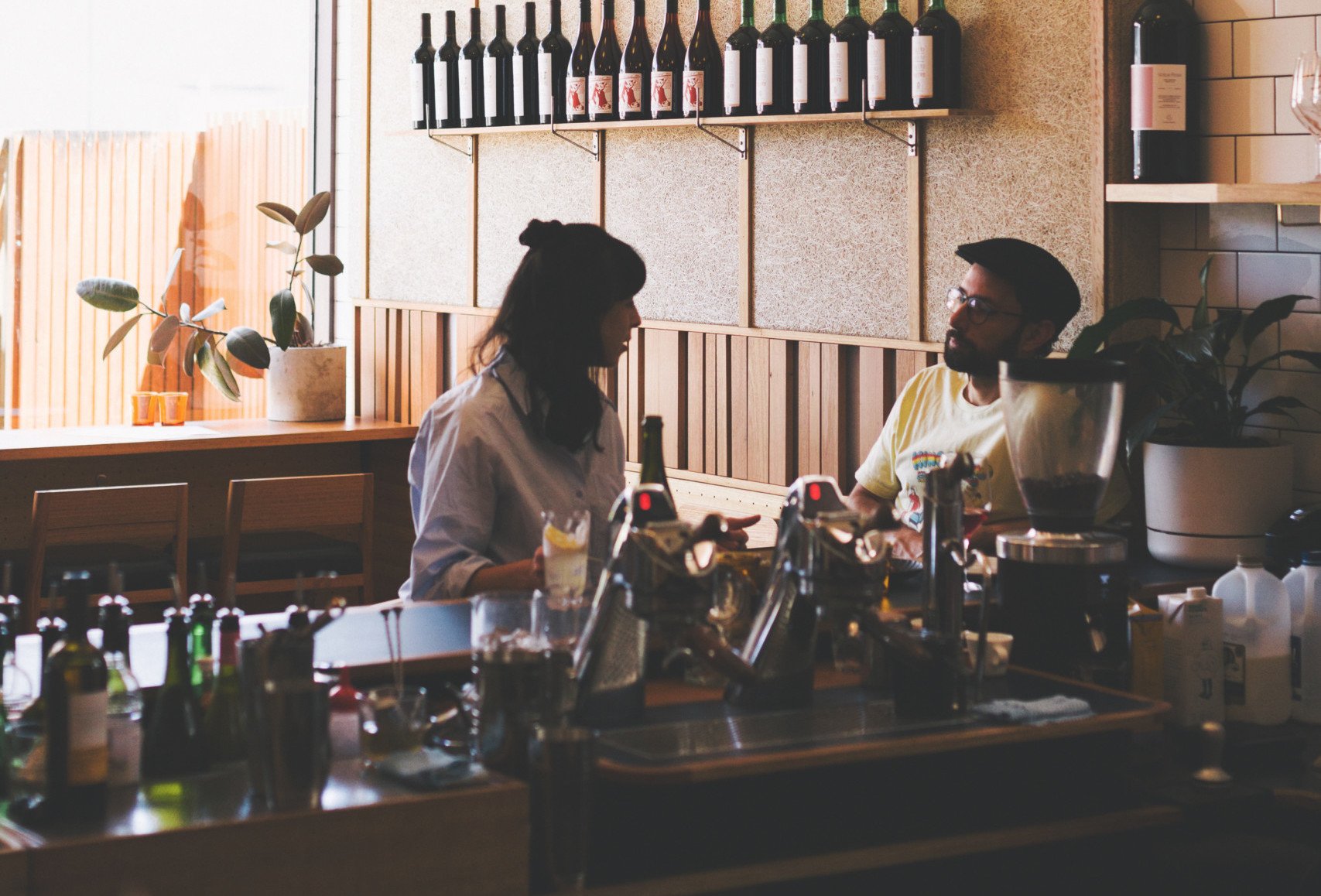April Outturn 2024 Article; Originally published in Unfiltered #80
Have you ever attended an exceptional bar or restaurant that ticked all the boxes, except one — the soundtrack? Scoring a venue is not as easy as it might sound and is an often-overlooked aspect. When it’s good, it can be easy to not consciously notice or think about it, but you know it’s elevating your experience. When it doesn’t suit, it can stick out like a sore thumb. Why is this so important, you might ask? Just like a good dram, a venue is the sum of several parts, and if one part is inadequate, the balance is tilted.
Water, barley, wood, time (maturation); service, quality, comfort, music. Whilst the key ingredients of whisky are pretty set in stone, those of a venue will vary based on personal preference (and the type of venue); I would comfortably argue the above four are fairly vital, however. As customers, it can be easy not to think about the effort and strategy behind what goes into a space’s soundtrack, and some of your favourite venues might put a lot more effort into it than is evident. I had a chat with a few different bars and venues to see how they each approached scoring their space — as it turned out, there were a few similarities in tactics even though their main focuses differed.
The sound of silence
Have you ever tried having a conversation in a venue without music? It can feel a bit strange. Think of it this way: music in a venue is kind of like having an extra person sitting with you that always knows what to say. Marek, one of the founders of Waxflower (a boutique vinyl listening bar in Melbourne), says that “Music can fill the space between words, and in those moments, it’s easy to relax and drink in the good vibes. We’re often surprised by how the music creates a social atmosphere that people feel comfortable in.”
Even when you’re sitting alone at a bar or dining solo at a restaurant, music makes for excellent company. It gives life to the venue and its environment; bonus points when it’s music you enjoy — this can certainly boost your mood. Like the aroma or taste of a certain whisky, music can unlock memories and emotions, enhancing your experience. (A study was published in the International Journal of Neuroscience in 2019 which concluded that self-selected — and unfamiliar — music essentially triggered the most activity within one’s brain in a study regarding music therapy).
And, at the end of the day, it is about the intention of the venue and what they want to deliver. Lachlan Watt from Melbourne SMWS Partner Bar Whisky & Alement, talks about his triangle of aspects that bars should focus on: drinks, music, and service.
“You can get two of these, really easily, and it’s easy to maintain that. I realise that it’s easy for us to get people to focus on what they’re drinking, what they’re tasting, the experience they’re having, the service that they’re getting — that’s really important to us. So, music is a secondary thing for us, but we still want it to be enjoyable because we have to listen to it all the time”.
The dynamic approach
Now, as I’m sure some of you may know, putting the ingredients of a recipe together is one thing, but executing it is another. It’s not just enough to have music in a venue, the right type of music must be selected, too. This is based on more than the environment and the type of bar, but also the customers, the time, and how busy it is.
 Matthew Naturani from No Vacancy café gallery in Melbourne first described the idea of a “dynamic playlist” to me; the idea that the venue should be constantly shifting its audible offering to fit the vibe of the room. If it’s busy and loud, something more upbeat might be suitable at a louder volume. Has it quieted down with only a few customers sitting around? It might be time for something more relaxing at a lower volume.
Matthew Naturani from No Vacancy café gallery in Melbourne first described the idea of a “dynamic playlist” to me; the idea that the venue should be constantly shifting its audible offering to fit the vibe of the room. If it’s busy and loud, something more upbeat might be suitable at a louder volume. Has it quieted down with only a few customers sitting around? It might be time for something more relaxing at a lower volume.
“It was just that idea that you kind of have to read the room and respond to it. If you were to play something bright and happy on a quiet, gloomy morning, there’s going to be that disconnect between the actual energy in the room and the music you’re playing. You can’t force a vibe on someone, it’s very much a give-and-take sort of thing.”
And this isn’t just for cafés. Andy and XY Chu from One Or Two (Melbourne) also spoke about having different playlists and styles of music to suit venue capacity, time of day and even the weather outside. “You don’t want something upbeat if it’s raining outside”, says XY, doubling down on the idea that the weather should influence the music inside.
For One Or Two, the musical approach is minimal, fitting in with the bar’s aesthetic; a dark colour palate, small cocktail menu, and modestly curated whisky selection, not to mention the small physical size of the venue. Lo-fi and jazz-hop beats are the go-to musical styles, with some more up-tempo hip-hop entering the mix on Friday nights and the weekend. In this instance, all of these elements work harmoniously to convey what owner Andy Chu intended for the bar.
At Whisky & Alement, the playlists are based on the venue’s capacity, with three distinct playlists (and two more on the way) designed around the capacity and general accompanying vibe that would bring.
“We’ve got ‘quiet and warming’, and that’s based on, maybe 20% capacity. People sitting there, having a conversation with their friends or bartenders, enjoying and understanding what they’re drinking, background music basically. Then we’ve got ‘high energy conversation’, so closer to 100% seated capacity (roughly 40 people), everyone’s chatting at each other, having a good time, so we need a bit more energy from the music to cut through for those that are sitting on their own and don’t want to be listening in on the next person’s conversation; so you shouldn’t be able to hear the person directly next to you unless you’re actively trying to.
And then we’ve got ‘packed to the rafters’ which is full capacity, pumping service, just getting drinks into people’s hands, and they’re kind of ebbing and flowing, I’m constantly taking music off that playlist and adding to another, and also looking at local artists so it’s not stuff that you would usually hear in other bars. Just something different, interesting, left of centre that people wouldn’t have heard before.”
Whilst some venues will focus on more elements than others, the common theme of “reading the room” is seen throughout, even if music isn’t the primary focus. For venues where the music takes up a large part, however, different approaches are taken.

Front(s) and centre/Going a step further
It’s one thing to curate your musical offering, and another to create a space where the music takes centre stage; not just any music, though, but high-fidelity experiences where music source, acoustic treatment, and hardware are taken into account.
The listening bar is a concept that is slowly becoming popular as new venues sprout up — it’s a concept with origins in Japanese culture. The first listening bars appeared in the 1950s as kissaten bars (Japanese tea/coffee houses) which were designed as hybrid spaces offering high-fidelity audio and refreshments, a place where the music took the spotlight and the other elements followed.
 It’s a style that’s been adapted all around the world and Australia is no exception. Waxflower in Brunswick, Victoria, is one such example. Built to be a listening room and offering a selection of beverages (from coffee to a revolving curated wine list) and small plates, the bar is a neat little spot where folks can sit alone and soak up the curated playlist, or catch up with some friends.
It’s a style that’s been adapted all around the world and Australia is no exception. Waxflower in Brunswick, Victoria, is one such example. Built to be a listening room and offering a selection of beverages (from coffee to a revolving curated wine list) and small plates, the bar is a neat little spot where folks can sit alone and soak up the curated playlist, or catch up with some friends.
“I think for us music is another opportunity to entice the senses and push the dining experience beyond food and wine”,says Marek.
“We don’t consider our sound system to just be the speakers, the mixer, and the electronics. With acoustically treated walls and a lot of careful tuning by Pitt and Giblin — the creators of the Superwax (bespoke-made speakers for the venue) speakers — the space itself is the sound system. The care taken in the design means the depth in the sound image can be immersive without being overwhelming.”
And that is the trick — creating an immersive listening experience that satisfies the solo patron purely there for the music, and the party enjoying conversation and laughs, which is where the acoustic treatment comes in. A must, and an expectation, for a bar such as Waxflower, but not exclusive to. Andy Chu has installed several acoustic panels on the ceiling of One Or Two to help contain the sounds and reduce reverberation; something that is bound to happen when the small venue gets packed and multiple groups are chatting away and enjoying themselves.
Another feature of a ‘listening room’ in the all-vinyl set-up — a combination of leveraging the high-fidelity sound quality that some LP pressings offer, and the capability to allow guest DJs to curate their own playlists. The third ingredient is the personalised touch of seeing someone score the scene as it unravels. It’s that sort of tangibility that many appreciate and go to enjoy — that is a key part of a listening room.
“The DJs who play at Waxflower have the creative freedom to curate their own soundtrack. We book a vast range of artists, so you never quite know what to expect when it comes to the atmosphere. Sure, there are some artists who will have a certain style, but even then, Waxflower presents a new environment to play the music they might not normally play, say in a nightclub.”
The music source is certainly an important part of a listening room where hi-fi quality is key, but how necessary is it in a venue where music takes the backseat? The average pub, bar, café, or restaurant would rely on streaming MP3 quality from the likes of Spotify — a compressed format that’s not the greatest if you’re looking to sit down and absorb the music, but certainly more than adequate for a lively venue. Again, intentions vary, and these will influence a space’s sonic approach. But, finding the balance (dynamically and genre-wise) and reading the room are key to creating a pleasant atmosphere.
Music plays an integral part in all venues, whether it’s the primary focus, or not. It’s ever-present, and it’s there to guarantee a satisfying experience and elevate the vibe. Maybe after reading this, you might find yourself giving a bit more thought to the music behind some of your favourite venues, you might even notice shifts in musical styles as the place fills up or the weather changes.
This article is featured in April 2024 Outturn — bottles will be available to purchase on Friday the 5th of April at midday AEST exclusively to members of The Scotch Malt Whisky Society. Not a member? Click here to learn more about the world’s most colourful whisky club.








